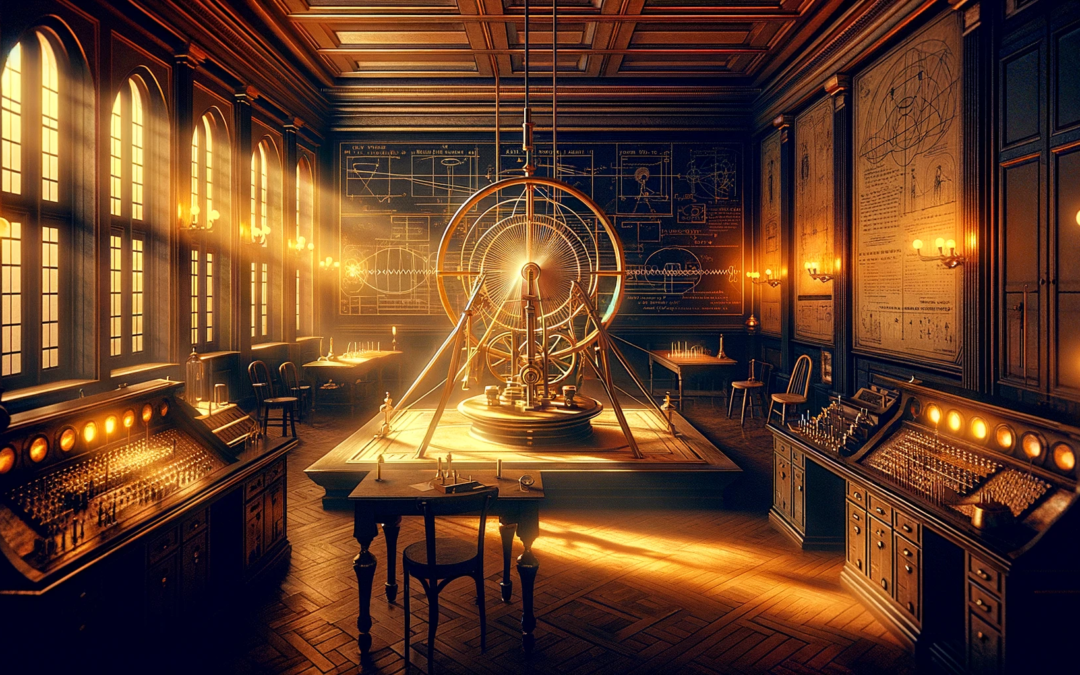In a world that is perpetually in motion, both literally and metaphorically, the experiment conducted by Albert A. Michelson and Edward W. Morley in the late 19th century stands as a pivotal moment in our understanding of the universe. The Michelson-Morley experiment, as it came to be known, was not just an inquiry into the mysteries of light and ether but also a profound exploration of the very fabric of reality and our place within it.
The Quest for Ether: A Cosmic Sea
At the heart of the Michelson-Morley experiment was the concept of the luminiferous ether. This was thought to be a subtle, invisible medium filling space, through which light waves propagated much like sound waves travel through air. The prevailing wisdom of the time suggested that as Earth moved through this ether, there would be a detectable ‘ether wind’ – an effect of our planet’s motion relative to this universal medium.
Engineering Precision: The Interferometer
Michelson, an adept experimenter, and Morley, a skilled chemist, joined forces to detect this ether wind. They employed an apparatus known as the interferometer. This device split a beam of light into two perpendicular paths, reflecting them back to recombine. If the Earth were indeed moving through an ether, one light beam would take a slightly longer path than the other, causing a detectable shift in the interference pattern of the recombined beams – a shift that would be the signature of Earth’s motion.
The Unexpected Silence: No Ether Wind
Yet, the results were startling and counter to all expectations. The expected shift in the interference pattern was not observed. No matter how the experiment was refined and repeated, the conclusion was inescapable: there was no detectable ether wind, no discernible effect of Earth’s motion through a supposed cosmic medium. This null result was not just a mere experimental failure but a window into a deeper understanding of the universe.
Ripples Through Time: The Implications
The implications of the Michelson-Morley experiment were profound and far-reaching. It challenged the then-dominant Newtonian mechanics and paved the way for Albert Einstein’s Special Theory of Relativity. Einstein’s postulation that the speed of light is constant regardless of the observer’s motion rendered the concept of ether unnecessary. Space and time were no longer rigid structures but malleable, interwoven in the cosmic tapestry.
A Philosophical Odyssey: Reconsidering Our Place
Beyond its scientific impact, the Michelson-Morley experiment invites a philosophical reflection. In a universe where our planet’s motion couldn’t be detected through this experiment, it prompts us to reconsider our place and role in the cosmos. Are we stationary in a dynamic universe, or is our perception of motion and stillness merely a facet of a more complex reality?
The Legacy Continues: Modern Explorations
The echoes of the Michelson-Morley experiment resonate in modern physics. Today, scientists probe the fabric of space with tools like the Large Hadron Collider and gravitational wave detectors, unraveling mysteries that stem from the very questions Michelson and Morley posed. Each new discovery is a tribute to their pioneering spirit and a reminder of the endless quest for understanding.
Concluding Reflections: A Journey Beyond the Visible
The Michelson-Morley experiment, more than a century old, remains a testament to human curiosity and the relentless pursuit of knowledge. It reminds us that sometimes, the most profound discoveries lie not in what is found but in what is not, in the silent whispers of the cosmos that nudge us towards greater truths.










